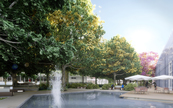-
Recnove Rede Record
- Architect
- Edo Rocha
- Area
- 186.000m²
- Date
- 2009
- Location
- Jacarépaguá - RJ
- Client
- Rede Record
- Status
- Planning
Create a wide and continuous Boulevard, markedly for the enjoyment of pedestrians, which will provide them with spatial exploitations with multiple activities and visual surprises within the landscape context. Squares with living spaces for indoor and outdoor socializing and contemplation interconnect the buildings by access ways, which, through its circular shape remind us of the shapes of propagating waves of communication signals, and provide passersby greater visual range of the spaces and gardens.
The configuration of the living and circulation planes, as well as the distribution of the furniture and vegetation areas reinforce the idea of the urban environment where the dynamism and diversity of shapes, colors, and styles create a rich mosaic that offers the individual numerous possibilities of paths and landscapes.
RATIONAL USE OF WATER
Along the Boulevard, mirrors were designed with water effects (jets and curtains), and staggered and interconnected by waterfalls and infinity edges, like a stream that finally flows into the lake. This, in turn, will act as a reuse water reservoir, feeding the entire system and ensuring the garden irrigation and general cleaning.
CANAL
The canal was designed to absorb the changes in the level of the water originated from the water systems (rainwater from buildings, road system drainage; water mirrors and generator cooling). The entire route was staggered in order to follow the land tilt, with the formation of dikes that overflow from one to another, thus ensuring a constant water level.
FILTERING GARDENS / LAKE
Working together with the canal and the reflecting pools as a closed system, the lake receives the variations of the water level, in this case, originated from the filtering gardens and rainfall, considering the return period of two years and one hundred years. Its area is divided into basins with different levels. The higher ones are responsible for the final step of restoration, where vegetation with filtering capacity was specified. The lower basins retain the excess rainwater and are characterized by vegetation resistant to this hydric variation. -
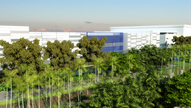
-
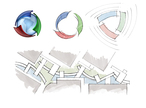
-
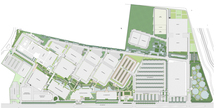
-

-
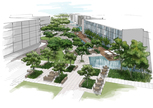
-
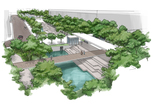
-
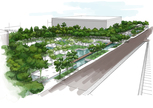
-
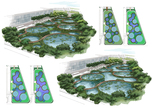
-
